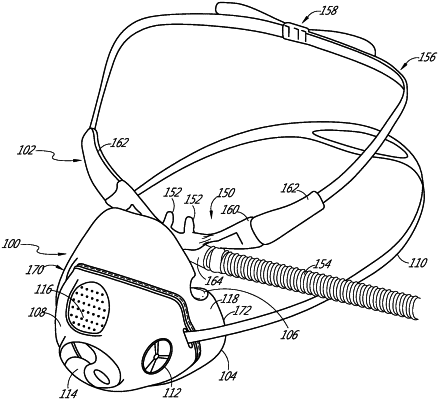| CPC A61M 16/0666 (2013.01) [A61M 16/06 (2013.01); A61M 16/0605 (2014.02); A61M 16/0672 (2014.02); A61M 16/0683 (2013.01); A61M 16/208 (2013.01)] | 20 Claims |

|
1. An interface system comprising:
a nasal cannula comprising a cannula body, at least one nasal prong extending from the cannula body, a gases tube that communicates with the at least one nasal prong and a cannula retention arrangement that is coupled to the cannula body and configured to retain the nasal cannula on a head of a user;
a mask having a mask body, the mask body defining a user-contacting surface and an interior space when the user-contacting surface is in contact with a face of the user, the interior space of the mask being configured to accommodate at least a portion of the cannula body including the at least one nasal prong when the mask is positioned on the head of the user with the user-contacting surface in contact with the face of the user, the mask further comprising a one-way valve configured to open on inhalation and configured to at least partially close on exhalation;
the mask is adapted to create a seal around a nose and/or a mouth of the user when the mask is used in combination with the nasal cannula and is selectively securable to or removable from a user independently of the nasal cannula, the seal being sufficient to allow the interior space of the mask to be pressurized to provide increased respiratory pressure during inhalation and exhalation relative to use of the nasal cannula without the mask; and
a variable vent configured to enable application of expiratory pressure to be selectively applied.
|